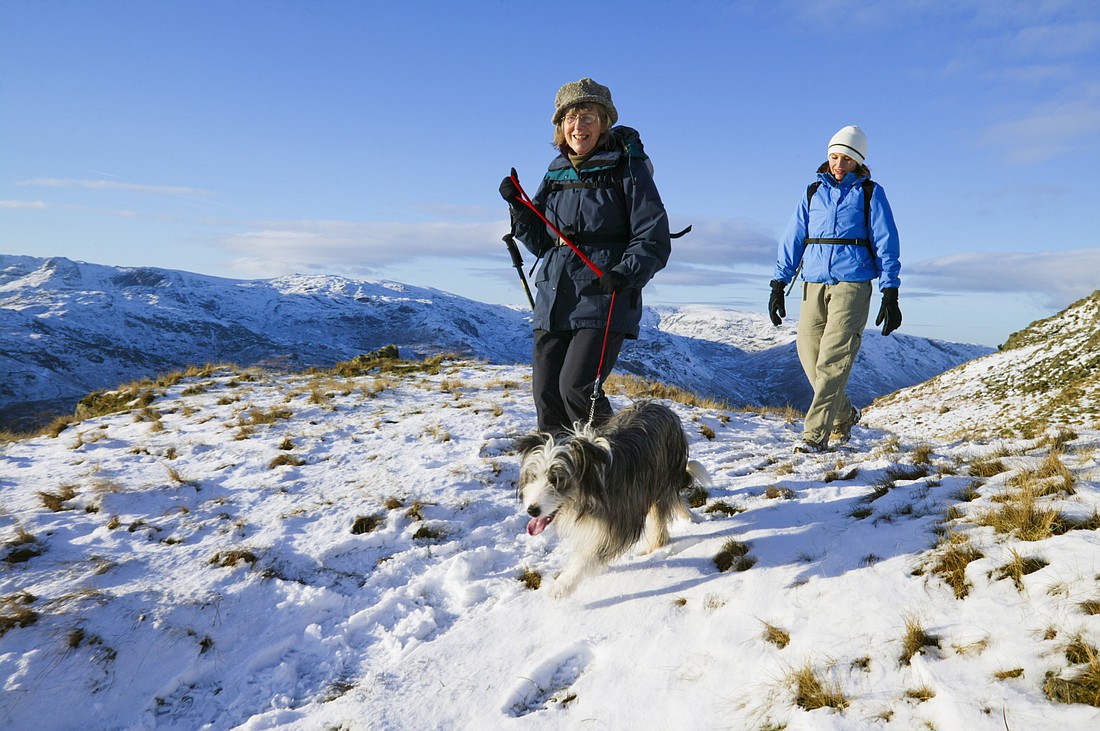Take Care of Your Bones!
December 8, 2014 at 12:24 p.m.
Imagine the crisp clear air of a sunny January day, the sun is shining and the air feels cool on your lungs. You are hiking, or snowshoeing perhaps, in the Cascades on a trail that is just a little strenuous. You can feel your heart rate elevate slightly as your muscles engage and your breathing changes to keep up. Your muscles contract and with each step, with that motion, you are strengthening your bones. It might surprise you to learn that one of the ways to bone health is through exercises that also strengthen muscles.
Bone health is important to maintaining health throughout life. After about age 70 bone mass declines steadily, however people who maintain adequate nutrition and engage in strength and resistance training are able to delay this decline into later years and decrease the overall impact. The pulling and contracting of your muscles on the bone triggers the process to increase bone mineral density. Think of your bones as the foundation of your body, similar to a house you need to fix and maintain to keep it functional, otherwise it becomes rundown. In a sense your bones do the same thing. Through a variety of processes and signals bones are constantly remodeling to maintain the structure of the body. As bones undergo this remodeling process there are several nutrients required to maintain the integrity of the process. Calcium gets all the attention in the media. However, there are several other nutrients that are equally important that work either with calcium in its job or are required for calcium to be absorbed.
Vitamin D is one of the essential nutrients required for calcium absorption. Without it calcium is simply secreted without being absorbed and utilized by your bones. Living in the Northwest, where sun exposure is inadequate during winter months for our body to make much vitamin D, it is important to ensure sufficient vitamin D intake from foods. Good food sources include Alaskan salmon, mushrooms, and fortified dairy products.
Another important nutrient in bone health is vitamin K. Vitamin K is necessary for the binding of calcium to the bone matrix, allowing for greater bone density. One good source of vitamin K is dark green leafy vegetables. If you are taking a blood thinner such as Warfarin, rather than limiting your intake of these important foods, talk to your doctor about the possibility of matching your dosage to a consistent intake of vitamin K rich foods.
Maintaining strength and bone health are important to your overall health. With stronger muscles you will be less likely to fall and with stronger bones you will be less likely to break something if you do slip and fall. With stronger bones you will have the confidence to continue the activities you love such as hiking or snowshoeing. By consuming vegetables rich in vitamins D and K and other bone building nutrients you will likely have more energy too. Getting outside in the winter is helpful to all aspects of health, so what are you waiting for? Go Play Outside!
White Bean and Kale Minestrone
This recipe contains many of the nutrients that support bone health and is the perfect choice for a cold winter day.
1 1/2 - 2 cups finely chopped kale
1 tablespoon extra-virgin olive oil
2 large cloves of garlic
3 cups cooked white beans (about 2 cans)
2 ½ cups stock
1 tablespoon tomato paste
4-6 fresh sage leaves, or 1 teaspoon dried
1 teaspoon sea salt
Freshly ground black pepper
1 tablespoon fresh lemon juice
Freshly grated pecorino cheese
Wash kale and remove the stems from the leaves. Rollup kale leaves and cut into thin ribbons. Set aside.
In a 4-quart soup pot, heat olive oil and sauté the garlic briefly over medium heat. Add about half of the cooked beans and part of the stock. Puree the rest of the beans and stock in the blender along with the tomato paste and sage. Stir the pureed beans into the soup. Add salt and pepper to taste.
Mix the kale into the soup and simmer until kale has wilted (about 10 minutes). Add the lemon juice and enough water to make the soup a desirable thick consistency. Taste for salt and pepper and adjust seasonings. Serve the soup topped with pecorino.
Preparation time: 30 minutes
Makes 3-4 servings
Reprinted with permission from “Feeding the Whole Family,” by Cynthia Lair (Sasquatch Books, 2008).
Non-profit, accredited Bastyr University (bastyr.edu) offers multiple degrees in the natural health sciences, and clinical training at Bastyr Center for Natural Health (bastyrcenter.org), the region’s largest natural medicine clinic.





